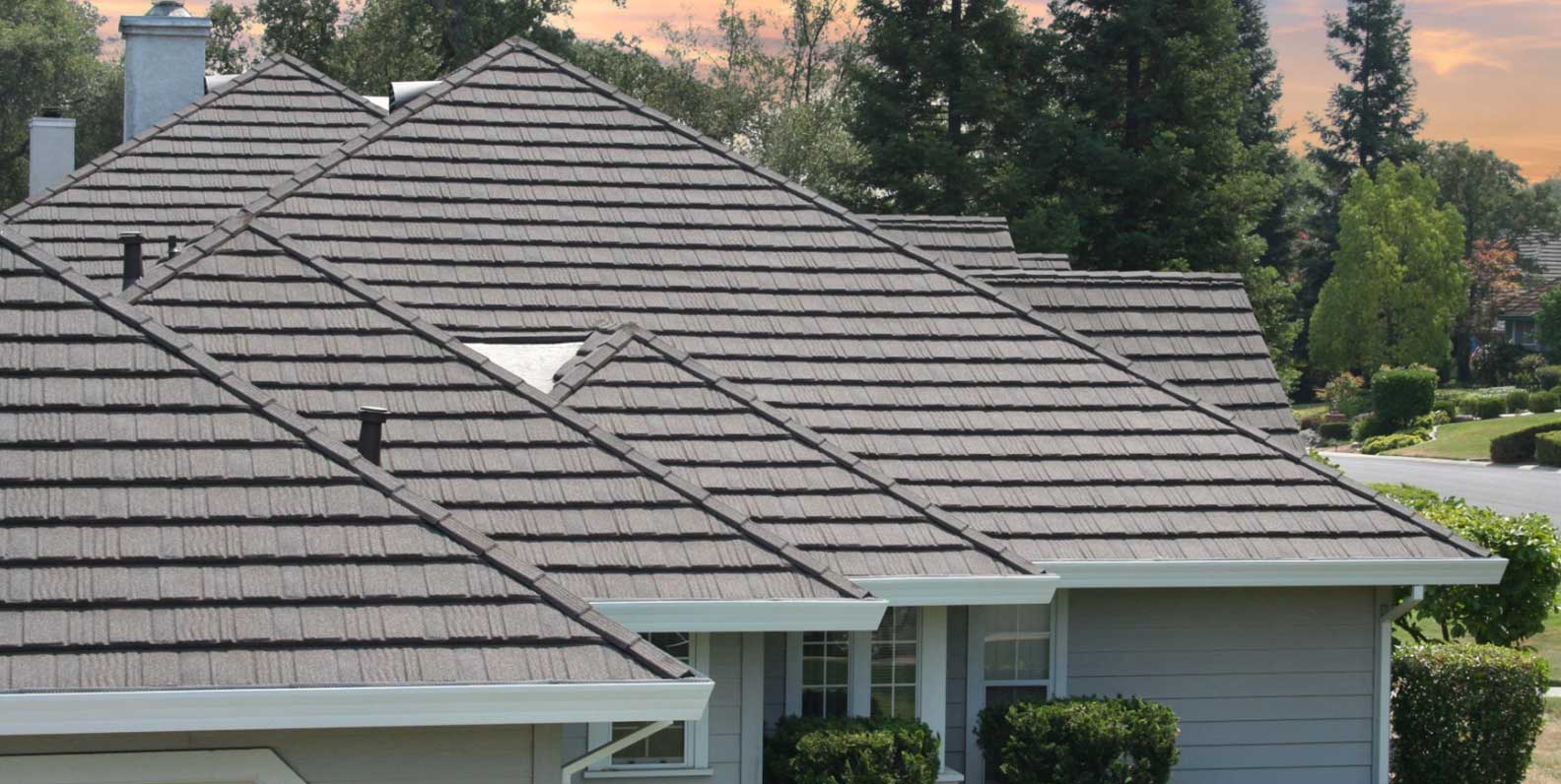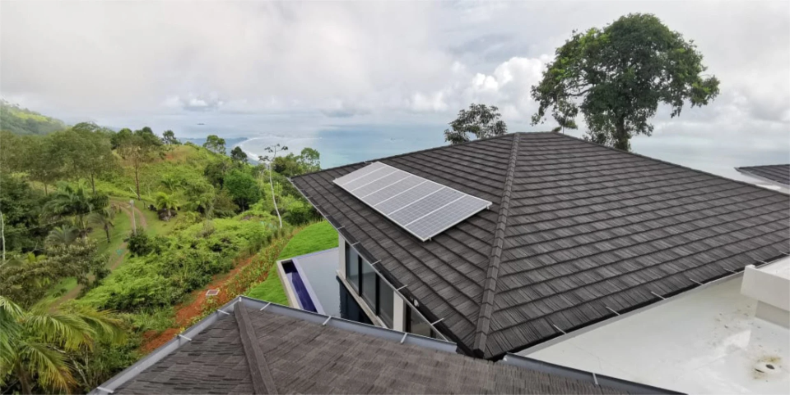Demand for metal roofing is at an all-time high. If metal roofing isn't part of your service offerings, now is the time to add it. Homeowner demand exceeds the amount of reputable contractors that can install metal roofing. And it's clear why:
- A higher return on investment.
- Reduced cooling costs by up to 25%.
- Using materials that are 100% recyclable at the end of the life cycle.
- Increasing home value by up to 6%.
- Longevity and performance.
For starters, our roofing doesn’t require any special tools during installation. Many of the issues involved with installing and maintaining large panel standing seam or corrugated metal roofs are also eliminated when using our products, making them an ideal choice for contractors looking to specialize in a unique roofing system. However, we know that some contractors new to our materials want additional resources covering installation.
So, if you’re using DECRA Metal Roofing for the first time, or simply wish to learn more about it, here are a few common mistakes to avoid when installing stone-coated metal roofing.
Mistake #1: Not Following Manufacturer's Guidelines
When your roofing team is ready to install a DECRA roof, you’ll find all of our installation guides at the DECRA Knowledge Base for our products. There, you can download technical documentation designed for new contractors, including information that lets you know which products to use based on the roofing style of the home.
DECRA offers multiple looks of Tile (DECRA Tile, DECRA Villa Tile), Shake (DECRA Shake, DECRA Shake XD) and Shingle (DECRA Shingle XD and DECRA Shingle Plus). Some of our products can be applied directly to the deck and others can be applied on battens. While all of our products provide extreme performance once installed, roof slope and layout may make installation–and costs–easier to manage.
DECRA installation guides also include important details for component and accessory installations that can cause problems later on if instructions aren't properly followed, including:
- Properly installing panel vents and venting.
- Installing over spaced sheathing.
- Compatible sealants and flashing techniques.
- Pre-painting any vertical or exposed portions of the DECRA channel.
Keep in mind that we designed DECRA roofing profiles for roof slopes of at least 3:12. Any pitch less than 3:12 is considered decorative and should be installed over an approved waterproofing material. Therefore, you’ll need to consult your local building codes to ensure that the roofing system complies with regulations before installing DECRA panels.
View DECRA Installation Guides
Mistake #2: Using Substitute Fasteners and Incompatible Metals
Never use cheaper and less durable substitute fasteners or incompatible metals when installing stone-coated metal roofs. Remember that lead and copper in flashing or fasteners are also incompatible with DECRA Metal Roofing and should not be used. DECRA also discourages the use of stainless steel fasteners for installing any DECRA panel or accessories to avoid the possibility of galvanic corrosion response.
For roofs in HVHZ (High-Velocity Hurricane Zones), DECRA provides a durable #10 x 1.5” corrosion-resistant fastener with a ¼” hex head. This superior DECRA fastener has been approved in Miami-Dade County, Florida, and meets the rigorous wind resistance requirements in the most challenging code jurisdiction in the United States. Meaning, our roofs can withstand hurricane-level winds and the corrosiveness of salt water.
Ultimately, you want to use the materials we recommend for our roofing products to deliver the highest quality craftsmanship to the homeowner while extending its long-term value.
Mistake #3: Under- or Over-Ordering Materials
Ordering the right amount of roofing materials is crucial, whether you’re re-roofing a home or doing a complete tear-off.
DECRA provides estimating sheets for each individual profile that makes generating a material list simple, easy and accurate. The calculation equations allow you to take the square footage of the roof surface as well as your linear measurements of all eaves, hips, valleys, rake/gables, ridges, sidewalls and headwalls to create an accurate list which can be sent electronically to your supplier for an instant quote. DECRA even has a formula to calculate anticipated waste based on the design of any given roof.
Find each estimate sheet below:
- DECRA Villa Tile (Direct-to-Deck) Estimating Sheet
- DECRA Tile and DECRA Shake (Battens) Estimating Sheet
- DECRA Shingle XD (Direct-to-Deck) Estimating Sheet
- DECRA Shake XD (Direct-to-Deck) Estimating Sheet
Mistake #4: Roof-Over Instead of Doing a Tear-Off
Here’s where your professional roofing expertise and advice to the homeowner becomes crucial. When homeowners learn just how lightweight DECRA Metal Roofing systems are, they often assume that a quick and easy roof-over without a complete tear-off is the solution they need.
If the old roof is able to pass a thorough roof inspection as is, then there’s no problem with a direct-to-deck or batten roof-over – As long as local codes allow it. Some jurisdictions have specific restrictions on how many layers can be installed, while others might be based on total weight regardless of layers. But in many cases, a tear-off of the old roof is recommended.
You can tell a roof is in a less than serviceable condition for a roof-over and will need a complete tear-off for the following reasons:
- Extreme age.
- Fishmouthing (folding in the edge of the roofing membrane).
- Widespread thermal cracking.
- Damage caused by storm debris impact or ice damming.
It’s also important to verify the condition and structural integrity of the substrate itself, which may have warped or weakened after long-term elemental exposure. Additionally, let the homeowner know that the felt underlayment's condition is essential as a backup barrier for preventing moisture penetration into the home. In freeze or thaw areas susceptible to snow and ice buildup, refreshing the Ice and Water Shield in critical areas to help extend the serviceable life of a new DECRA roof.
Additionally, it’s recommended to update skylights (or at least flashing kits) and other penetrations so they can thrive with the roof well into the future.
The long term benefits of a roof tear off not only offers a long-term solution for the homeowner by upgrading the structural integrity, but that a roof tear-off increases property value more while giving the house a brand new look.
DECRA Online Resources for Roofing Contractors
At DECRA Metal Roofing, we’re always here to help any roofing contractor needing additional assistance when using our products or looking to add them as an option to your product portfolio. Should you need help, we offer online training sessions with our sales representatives and dedicated training specialists online that allow us to partner with you to review your job, offer supporting materials, share pictures, and much more by contacting us.
Need help placing an order or have additional questions? Contact DECRA today.






